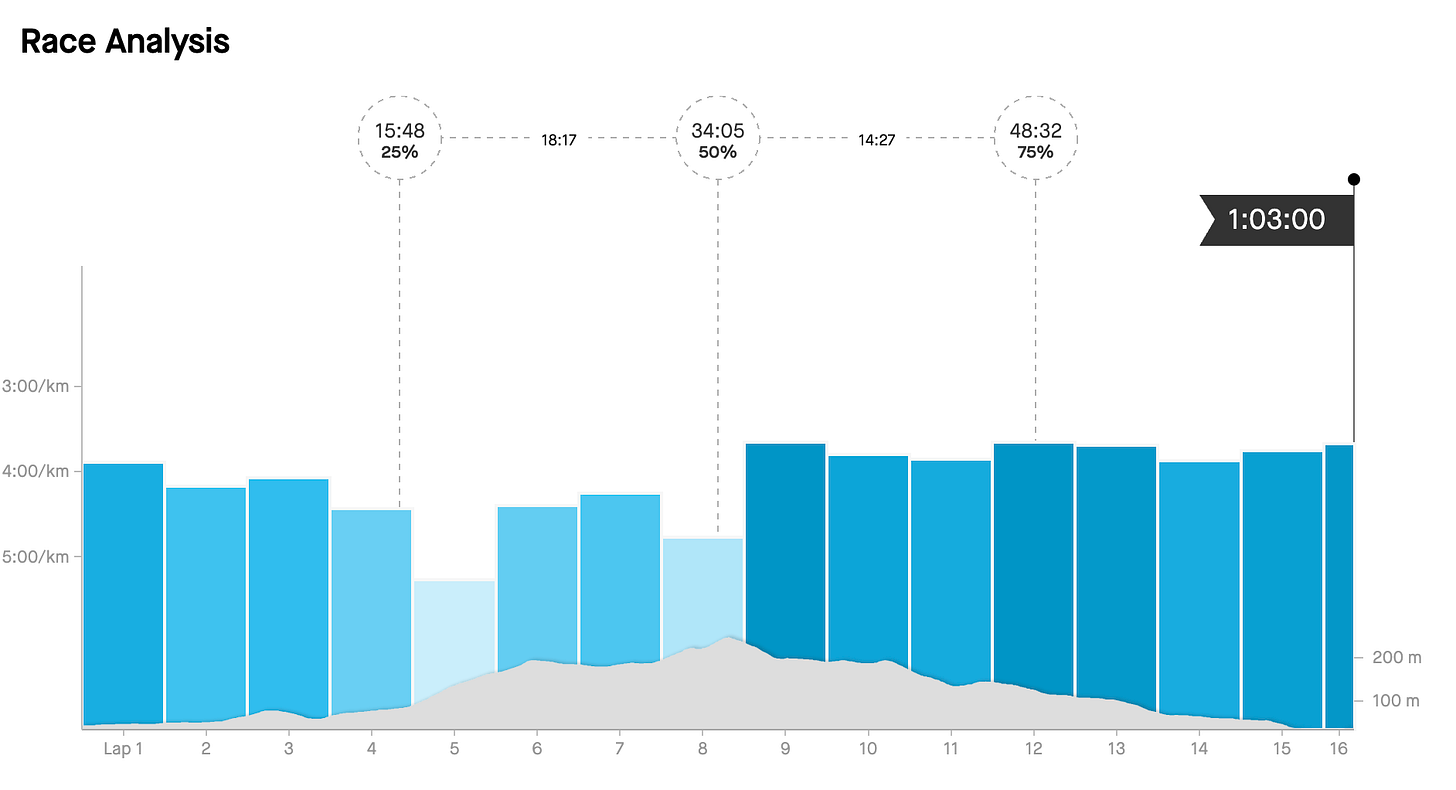Case study: morning vs night HRV and using low-intensity exercise and slow breathing to (possibly!) aid recovery
In this blog, I tried to put together an example of a few things I’ve discussed in recent posts and notes, to make it all a bit more practical.
In particular, below I show issues with night HRV data when trying to determine recovery / readiness as well as how we could use low-intensity exercise and slow-paced breathing as recovery strategies.
Here are the past 48 hours of my data, including morning HRV, night HRV, training heart rate, and slow breathing sessions.
Tools used:
HRV4Training: morning HRV measurement, while seated (see reasons behind this protocol here) + analysis with respect to my normal range.
HRV4Biofeedback: slow breathing exercises. While I measure with the iPhone camera in HRV4Training (see data and validation here), I prefer to use a Polar H10 for longer, biofeedback sessions.
Coros watch: this is what I use for training, even though I pair it with a Polar Verity or H10 for more accurate heart rate data. Since Coros added night HRV monitoring, I’ve also gathered that data via the watch, for simplicity.
Overview
In the image above, you can see:
Morning vs night HRV before the race (discussed below)
The race, in which I ran about 1 hour near my limit, which for this duration means a threshold effort, with some parts at an even higher heart rate due to steep climbs.


After the race, you can see a few activities that might speed up recovery, from a nervous system point of view (also discussed in more detail in a section below):
5 minutes of biofeedback (heart rate 69 bpm, rMSSD 101 ms)
about an hour of easy riding (120 bpm, or 65% of my maximal heart rate)
10 minutes of biofeedback (heart rate 59 bpm, rMSSD 122 ms)
Morning and night HRV the day after the race, both are suppressed because of the hard effort.
A day spent doing more activities that might help recovery quickly, just like after the race:
10 minutes of biofeedback (heart rate 53 bpm, rMSSD 162 ms)
two hours of easy hiking and running (100 bpm, or 55% of my maximal heart rate). I think it is really key for these sessions to be easy, otherwise we are just adding stress.
Morning and night HRV the following day, both are normalized at this point.
Let’s discuss in more detail some important aspects of the data and the protocols.
Morning vs night HRV data
We can see there is only one inconsistency, pre-race, due to a high-carb dinner which results in suppressed HRV during the night.
This happens as the night is not an ideal moment to assess recovery / readiness if there are evening stressors (even positive ones, like eating carbs before a race or socializing!). This is why I think that for athletes, it is better to measure far from stressors, dinner included, and after the restorative effect of sleep, which means measuring first thing in the morning is best.
If you prefer to use night data, it is totally fine, just be aware of the limitations, especially in terms of how the data is interpreted (and what implications that interpretation might have for you, psychologically).
The two days after my race don’t include any late stressors in the evening, and therefore we can see the data is consistent, with a suppression in both morning and night data the day after the race, and a re-normalization the following day.
All as expected, I’d say.
Slow breathing and low-intensity exercise
Given that I had blogged about these techniques recently, I was somewhat more motivated to experiment myself as well.
I normally do lots of low-intensity exercise, so no changes there, but this past weekend, after the race, I introduced some extra low-intensity and low-impact exercise (i.e. easy cycling) and some sessions of slow breathing, with the goal of possibly fastening recovery, from an autonomic nervous system point of view.
While we can never know what would have happened if I had used different protocols, what I want to highlight here is how after a maximal effort (1 hour at threshold in the race), we can’t really “override the system” (a valid concern if we think that the high-stress state might be functional and help with meeting some of the energy demands of the recovery process - a case of supply being matched to demand, allostatically - as pointed out by Kieran in our discussion in the comments section). When I try to use slow breathing in a highly sympathetic state (like post-race), my heart rate remains quite elevated (you can see in the image the data for the first session a few hours after racing), which is also why I’d recommend doing it in the evening before bed, and not right after exercise.

However, speculatively, these sessions, together with the low-intensity exercise, could bring me back to normal quicker (it still took an extra day though, as the following night and morning, my HRV was suppressed, as also shown in the image above).
More food for thought.
I hope the example is somewhat possible to navigate in the image above, and gives you a useful overview and some pointers to explore further differences in morning and night HRV as well as possible recovery strategies from a nervous system point of view.
Thank you for reading!
Related articles:
Marco holds a PhD cum laude in applied machine learning, a M.Sc. cum laude in computer science engineering, and a M.Sc. cum laude in human movement sciences and high-performance coaching.
He has published more than 50 papers and patents at the intersection between physiology, health, technology, and human performance.
He is co-founder of HRV4Training, advisor at Oura, guest lecturer at VU Amsterdam, and editor for IEEE Pervasive Computing Magazine. He loves running.
Social:







